What is a Macchiato?
by Selmir Omic
Foam, milk, and espresso. Just those three ingredients can make up at least four different drinks familiar to the general public coffee drinkers.
Simple ingredients tweaked to perfection and taste leave for an endless possibility. Without being a professional barista, sometimes it can be hard to keep all these Italian and French names for coffee drinks straight.
Even those familiar with coffee and the types of drinks that can come from espresso, struggle with naming them all. The drink of choice to be discussed today is the macchiato (pronounced: mah-key-AH-toe). Alrighty, let's get into it! Macchiato time!
Contents
- What is a Macchiato?
- History of Macchiato
- Italian Macchiato vs American Macchiato
- Types of Macchiatos
- Macchiato Commonly Asked Questions
- What is an Espresso Macchiato?
- What is a Latte Macchiato?
- Macchiato variations
- How to Make a Latte Macchiato vs. Espresso Macchiato
- Difference between a Latte Macchiato and a Café Latte
- Do You Dare Snub The Elders? / Getting Creative
- How To Make A Starbucks-Style Caramel Macchiato
- How To Make a Caffe Macchiato
- Espresso Field Guide
- Conclusion for Macchiato Lovers
What is a Macchiato?
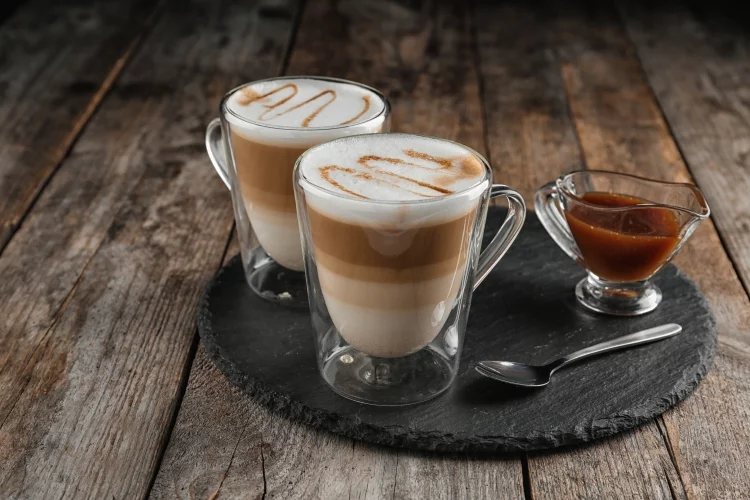
In basic terms, a macchiato is espresso, which is made first, followed by the addition of a smaller amount (often just a dollop) of steamed milk and foam. This is the traditional definition, and simplest.
"Macchiato" in Italian means "marked" or "spotted". Which is a good way to begin to look at the drink itself.
The marking is essentially what is on top of the drink, like a signature.
However, the marking is indicative of which liquid was poured in to the beverage second, whether it be espresso, or milk.
Because it can be either, depending on the type of macchiato you're making, be it a latte macchiato (milk first) or an espresso macchiato (espresso first).
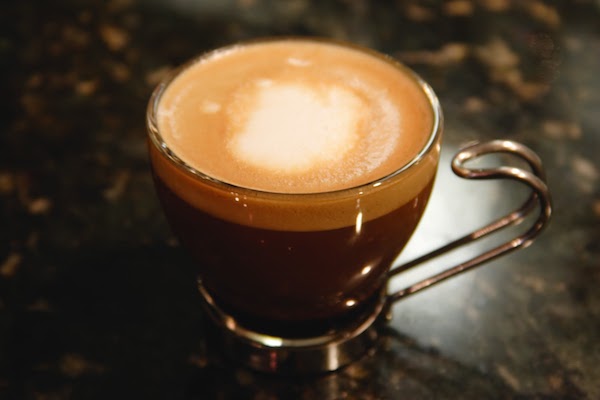
More on these two types of macchiatos shortly.
Macchiatos have long been a part of Italy's rich history of coffee-drinking and innovation, and a symbol of a standard of living that many countries strive for. Because hey, if you're drinking a macchiato, how bad is life, really?
Espressos, cappuccinos, and the demitasse glasses these drinks can be served in are all part of that old Italian coffee culture that's been around for centuries, and this also includes macchiatos.
History of Macchiato
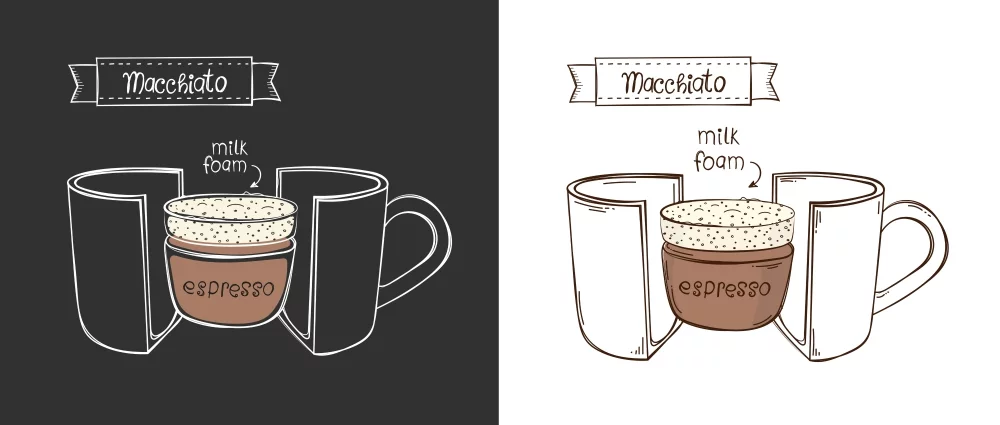
In order to talk about Macchiato, we first need to go over how espresso became popular in Italy and the rest of Europe as a beverage. While there is no definitive time/place for when Espresso became popular as a beverage, most sources point to Venice as a likely place.
In the 19th century, cafes began opening up in Italy and beyond. Some of these cafes were similar to modern-day coffee houses. These cafes began serving what is referred to as "Italian Espresso", which only recently became known as Espresso with the invention of machines that could produce the high pressures needed to extract such a small amount of liquid (20 ml).
Venice is believed to be the birthplace of modern-day Macchiato, due to the cafe culture that has been around since the 18th century. This is where cafes began serving Espresso and milk based drinks. Originally, espresso was not sweetened, rather it was served straight. To differentiate between different types of espresso, the names are usually asked to the barista instead of being written on the menu.
Italian Macchiato vs American Macchiato
One thing that comes up time to time is that many people think that what is being served at Starbucks as a 'Macchiato' is not the same as what is served in Italy.
This could both be true and false at the same time, because depending on which definition of Macchiato you look at (Italian or American), they're different.
The Italian term for espresso with a few drops of milk foam is "caffè macchiato"
However, what is being served at Starbucks as a 'Macchiato', is actually more similar to the traditional Italian Macchiato.
Note: This only applies to Starbucks' Macchiatos (which is iced), not responding to their Cappuccinos.
Starbucks' Macchiato is an iced, triple shot espresso 'marked' with a few drops of foam.
In contrast, the traditional Italian Macchiato would be smaller (one or two shots), hot and without foam.
The term "Macchiato" in Italy may refer to both traditionally or what Starbucks serves depending on where you go.
However, as most cafes outside of Italy do not use the term "Caffè Macchiato" (in reference to a drink with foam), this article is going to stick with what the American definition of Macchiato and its history and creation is, and how it relates to Starbucks' iced Macchiato.
Types of Macchiatos
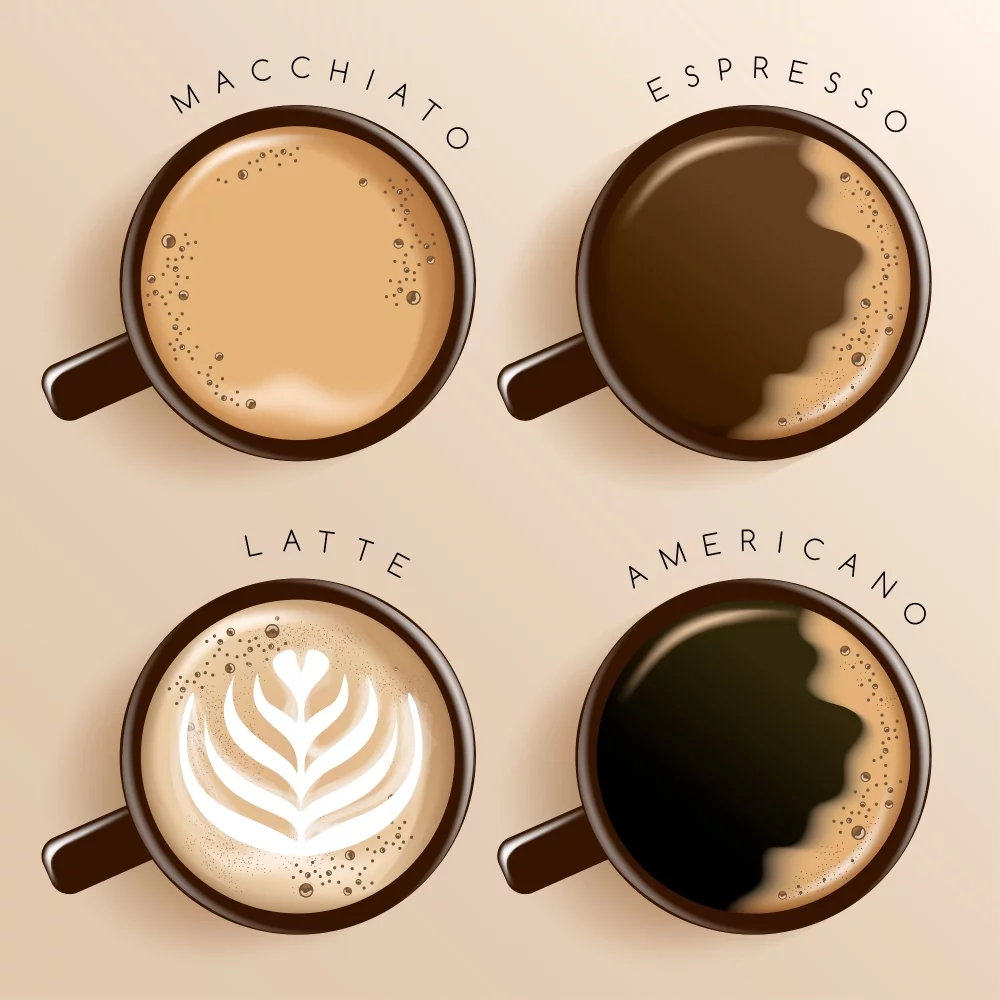
Traditional Espresso Macchiatos
The word "Macchiato" itself in Italian means 'marked'. In terms of a beverage, it refers to espresso coffee with a small amount of foamed/steamed milk on top (usually only a few drops). This is done by adding steamed or foamed milk to espresso and then topping it with a small amount of foam.
Mocha Macchiato (Starbucks)
This is what Starbucks calls their Macchiato that contains chocolate. Their iced mocha Macchiato consists of one shot of espresso, two pumps mocha sauce and 2% milk (frothed and poured on top). It is finished off with a few drops of chocolate on top.
In contrast to the Italian Macchiato, this drink is sweetened and made cold by serving it over ice. In terms of caffeine content, there are two shots in the mocha variation, but only one shot in their traditional caffe macchiato.
Non-Traditional Macchiatos
Starbucks' iced Macchiato appears to be Starbucks' own variation of the traditional Italian Macchiato. They serve it cold, sweetened and with foam on top (not just a few drops). The difference between this and their American version is that there is also foam and steamed milk mixed into the beverage.
Their iced Macchiato is made by first pouring three quarters cup of cold espresso over ice, then adding two shots of whole milk and finally topping it off with foam.
So as you can see, Starbucks' iced Macchiato consists of more than just a few drops.
In contrast, their regular Macchiato (iced) is made by first pouring three quarters cup of cold espresso (not steamed and not frothed), and then adding two shots of cold whole milk. After this, they top it off with foam. The difference between the Macchiato and Macchiato + Milk is that the former only has foam, while the latter also contains milk.
In contrast with Starbucks' iced mocha Macchiato, the traditional caffe macchiato consists of a single shot of espresso and no mocha.
Macchiato Commonly Asked Questions - Answered

How Many Shots of Espresso and How Much Milk?
People have asked, how many shots of espresso are in a macchiato? FYI, a macchiato is traditionally just a single shot of espresso, plus the milk. How much milk. It can be 2:1 espresso to milk, or even less milk, if so desired.
Also, in terms of the number of espresso shots added to your macchiato, if it's a coffee shop chain-made macchiato, which is unlikely to stick to any traditions, there will be two or sometimes even three shots added, depending on the size of the drink, the barista pouring it, and whether Jupiter is in retrograde.
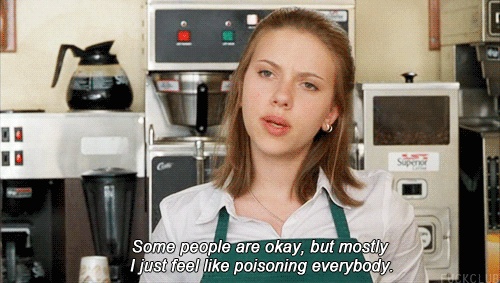
It's not as if the modern coffee shop barista is going to say "Hold on, this venti macchiato is only getting one shot of espresso, because grand dad would have wanted it that way."
No, they will add more shots because it's a bigger drink and they need to fill it with something.
Hot or Cold?
Another question we hear a lot is if a macchiato is to be served hot or cold? They can be served hot or cold, with the Starbucks cold caramel macchiatos being a big hit in the summer.
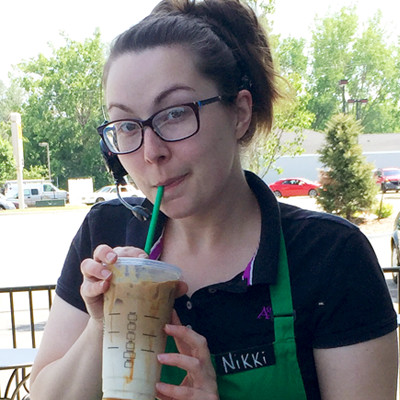
Traditionally, macchiatos are served hot, not cold. Starbucks, as it does, is not one to adhere to the old, strict ways of making and serving espresso-based drinks.
Are They Sweet?
What about the level of sweetness in a macchiato?
Speaking of tradition, the sweetness of macchiatos depends partly on how traditionally they're made. If they don't have any syrup in them, which traditional ones don't, they'll be less sweet unless sweetener is added in some way.
If we're talking certain coffee shop chains (again, Starbucks comes to mind), various sweeteners and syrups might be (and often are) added to their macchiatos.
It should be noted that coffee chains like Starbucks aren't exactly adding syrups and sweeteners to their macchiatos for no reason. Customers love these sweet, sugary drinks, and so that's how they're made nowadays. It's by demand, people!
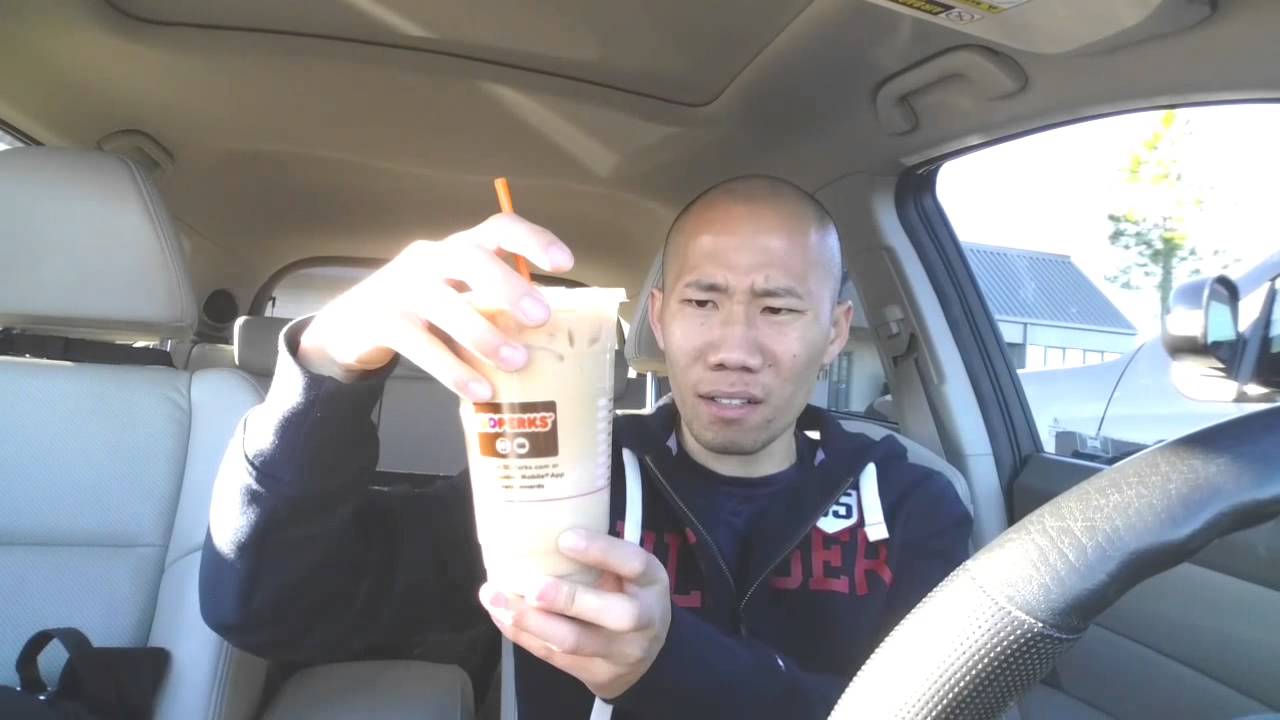
Otherwise, if we adhere to traditional ways of making a macchiato, the only two ingredients are milk and espresso, which isn't going to result in a very sweet drink overall.
If you want to be a bit of a brat, feel free to say to the next drive-thru person at your local coffee shop chain, "You know, I think the Italians back in the 1800's would not be impressed with you guys adding all those syrups…" See what kind of reaction you get from this. 🙂
If you do try to invoke the displeasure of any old Italian coffee masters potentially watching from beyond the grave to any modern, non-tradition holding drive thru employees, let us know what they said to you in the comments!
Stirred or Not?
Another question that often gets asked is if macchiatos are meant to be stirred? Again, this all depends on how you personally like it, but traditionally, mind you, the answer is no.
The reason being, macchiatos are meant to be experienced not like a latte where the drink it more or less blended, but rather the foam first, followed by the milk, and then the flavorful espresso on the bottom.
You are meant to experience the drink not as one single flavor, but as multiple flavors experienced one at a time, starting with the foam on the top.
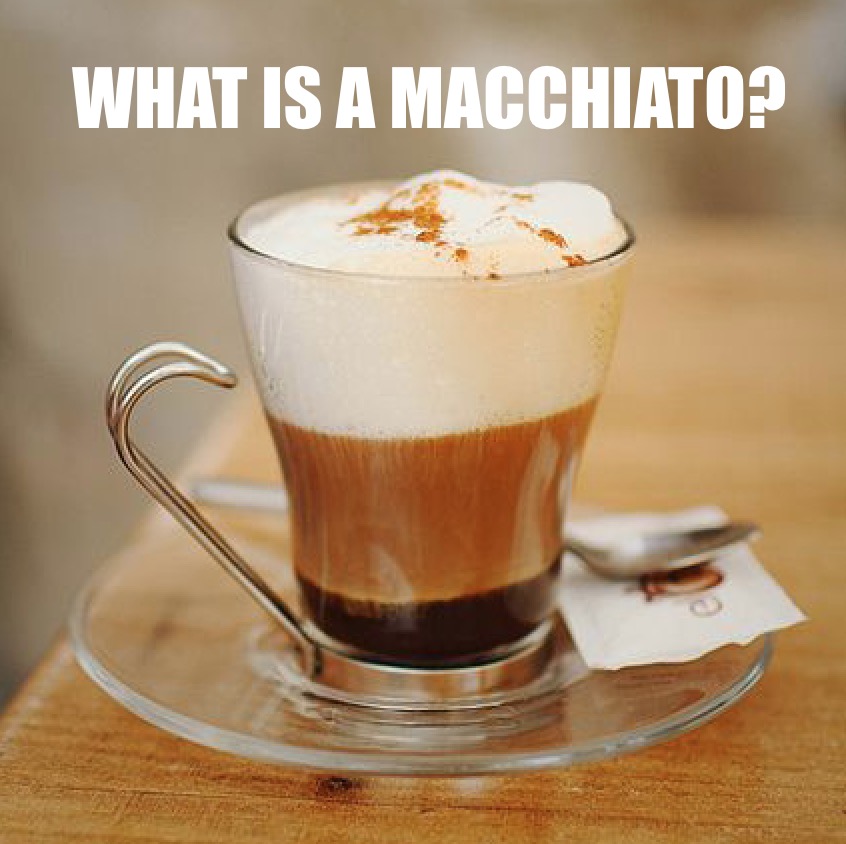
This is assuming we're talking about an espresso macchiato, one of the two types you'll encounter and that we will describe in more detail now.
Are they Strong?
People ask if macchiatos are strong? Well, that depends on a few things, such as how many shots of espresso are in the macchiato.
If it's a traditional macchiato, then there's one shot of espresso, and it won't be as strong as if you get a macchiato made with two or more shots. In terms of caffeine amounts, we're talking about 75mg per shot of espresso.
Also, "strong" is a subjective term which could apply to the caffeine kick that's in the espresso itself that's put into the macchiato, or it could just mean the taste of the espresso, and if it is overwhelming compared to the taste of the steamed milk.
As such, the "strength" of the macchiato is hard to define, because of course it will depend.
Let's just say, if you find espresso itself to be strong, then you're probably going to find macchiatos to be strong, because there's espresso in them. And the more shots, the stronger of a taste you're going to get.
Are they Stronger than Lattes?
People also ask if macchiatos are stronger than lattes? To this we say most definitely, because the espresso is less blended. With lattes you get a more consistent taste of the two liquids mixed together. With a macchiato, the espresso taste is going to hit you more directly.
For someone to like a macchiato, they are going to need to enjoy the taste of pure espresso, whereas a latte masks the taste of the espresso more.
What is an Espresso Macchiato?
It is not uncommon to hear a macchiato called an espresso macchiato or latte macchiato.
These are both considered macchiatos, yes, but they are two distinct types, leading to some confusion around what a macchiato actually is. We've been hinting at it this whole time, this confusion, and now we're here to absolutely clear it up!
If we're talking about an espresso macchiato, we have espresso marked by steamed or frothed milk which is poured in after, followed by foam which sits on top.

Remember, there's not much milk added.
Just a dollop, or 2:1 espresso to milk, and sometimes even less milk than that, depending on how you want it to look / taste.
What is a Latte Macchiato?
For a latte macchiato, we have the reverse in terms of preparation when compared to an espresso macchiato. Steamed milk is added first, in this case, followed by the single shot of espresso.
This preparation of the drink gives the latte macchiato a different look from the espresso macchiato, and a different marking on top, that being the espresso that is added last.
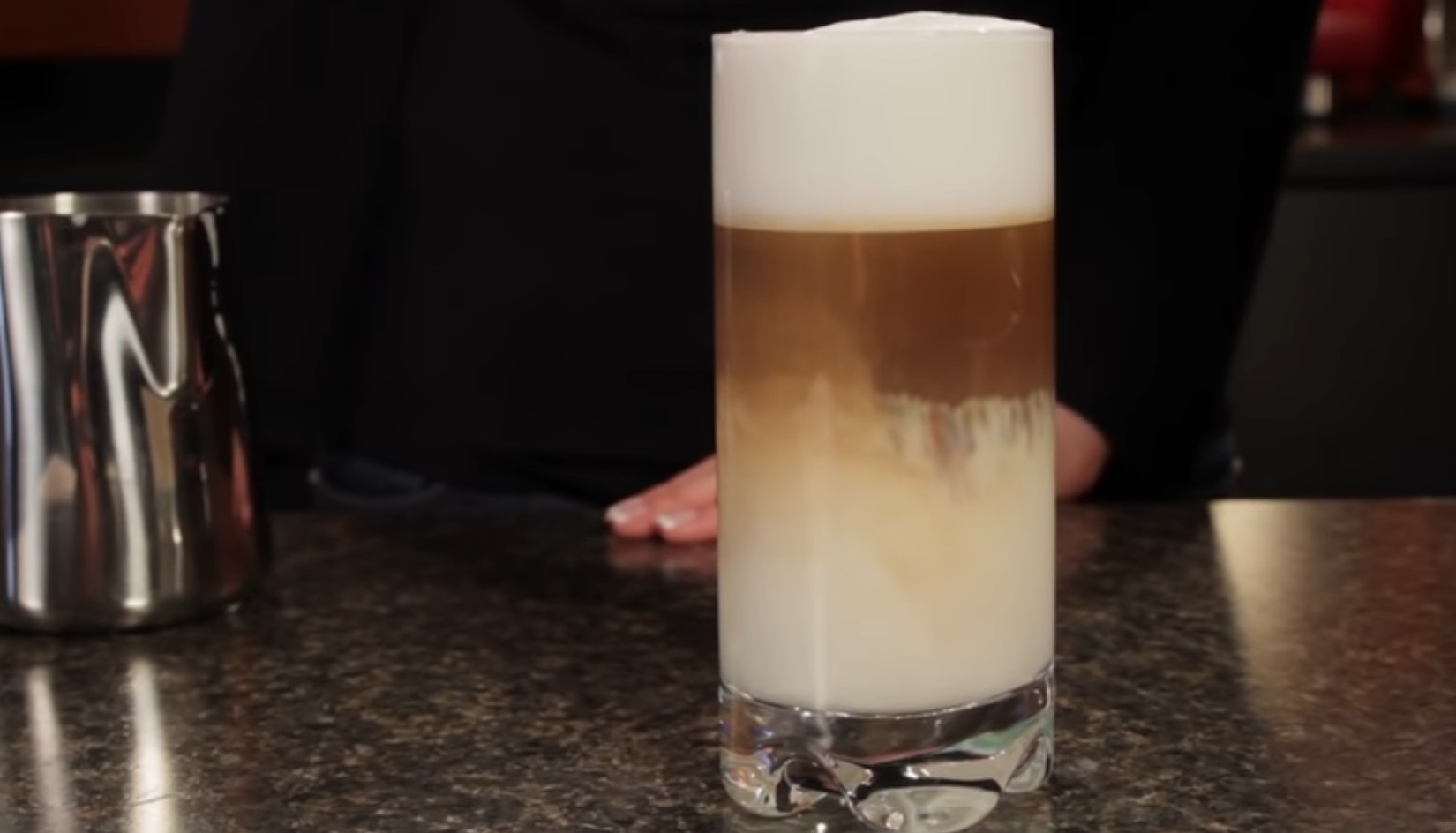
So, we have described here two different versions of the same drink, each providing their own delicious taste experience.
Baristas will debate which way is the exact and best way to prepare each, and there are a multitude of slight differences to consider, including:
- The type of espresso bean used (to make the espresso)
- The way the espresso itself is made (the particulars of how the barista made it and on which machine)
- The way the milk is frothed (or steamed)
- The foam (how much, how foamy)
- The particulars of the markings themselves (how big, how artistic)
…and so forth.
Take a look at this graphic, offered by Starbucks, to further differentiate between an espresso macchiato and a latte macchiato.
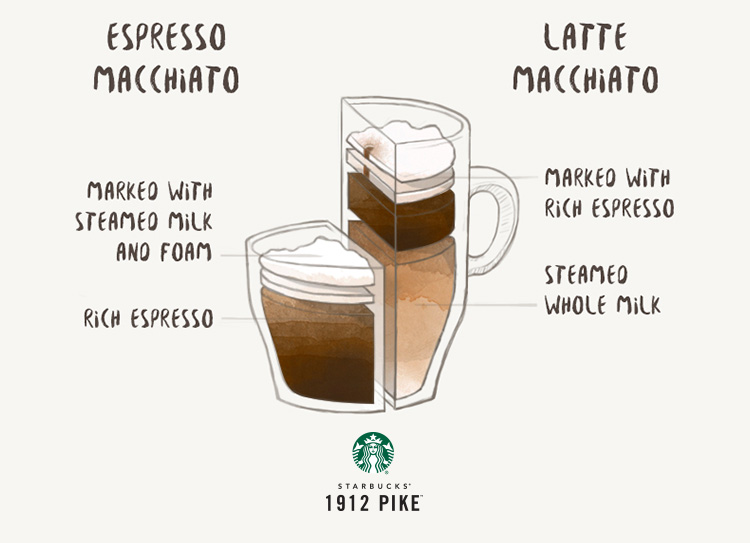
As you can see, the way it is layered, and blended, is quite different in each case. They even differentiate the serving glasses, which is another consideration for you as a café or home barista making one of these babies.
We think that the key here is the term "spotted" when it comes to the macchiato, because its particular markings indicate the type of macchiato have in front of you.
Macchiato variations

Macchiato is an Italian word that essentially means 'stained.' So, when ordering or making a macchiato, you're describing coffee that has had the milk 'stained' into it.
There are several types of macchiatos and most likely, you like one of these variations better than the others.
Macchiato vs. Latte
The macchiato has less milk than a latte, so it's stronger in flavor and more concentrated. A macchiato has one shot of espresso, where as a latte normally has two shots of espresso. The taste is also slightly different since the 'stain' of milk doesn't dilute the flavor of the shot(s) of espresso.
Macchiato vs. Espresso with milk
An espresso with milk has much more milk than a macchiato. This is probably what you order when you want coffee, but aren't in the mood for espresso. There are also flavored versions called cappuccinos, but more on those later.
Macchiato vs. Americano
An Americano is made with espresso, hot water, and cream/milk/sugar(s). It's the closest thing you'll get to 'Americano coffee' at a shop that serves specialty coffee drinks. With that said, it's typically not the same strength as an Americano, since one shot of espresso is typically used to make a macchiato.
Macchiato vs. Cortado
Cortados are similar to macchiatos, but instead of having just one shot of espresso, they have two shots. They're more traditionally made with whole milk, but they can be made with other types of milk.
Macchiato Variations
A dry macchiato is a variation on the traditional macchiato. Instead of having just one shot of espresso, it has only half a shot of espresso, so you'll get all the flavor without nearly as much caffeine or acidity. A dry cappuccino is made the same way, but with two shots of espresso instead of one.
A wet macchiato has even more milk than a regular latte. It's essentially just a spiced up version of an average latte. Close relatives to this type are the caramel macchiato and vanilla macchiato, both of which have syrups made with those respective flavors.
A caffe misto is a macchiato that has both milk and foam added to it. A caffe misto con panna is the same as a caffe misto, but with whipped cream on top instead of just foam.
Caramel latte vs. vanilla latte
These two types of lattes are very similar to macchiatos, but without the espresso. Instead, you'll get a shot or two of one type of flavored syrup and steamed milk for these types of drinks. Many coffee shops will use caramel syrup instead of plain old caramel sauce since it doesn't add the extra texture to the drink.
How to Make a Latte Macchiato vs. Espresso Macchiato
If you are interested in making a macchiato, you're going to have to pick the type you are going to make. Will it be milk on the bottom, or espresso on the bottom?
There are so many ways to make this drink, that it can be intimidating for a beginner to try. But you might as well try, just to get the hang of it!
Here's a great video showing how to make the two types of macchiato, from Whole Latte Love.
As you can see, these two drinks look very different, but they share the same trait which is that each has been "marked" a certain way, to indicate the type of drink it is.
Difference between a Latte Macchiato and a Café Latte
People also wonder what the difference is between a latte macchiato and a café latte. Ohh boy… The confusion here is easy to understand, as some might think they are in fact the same drink.
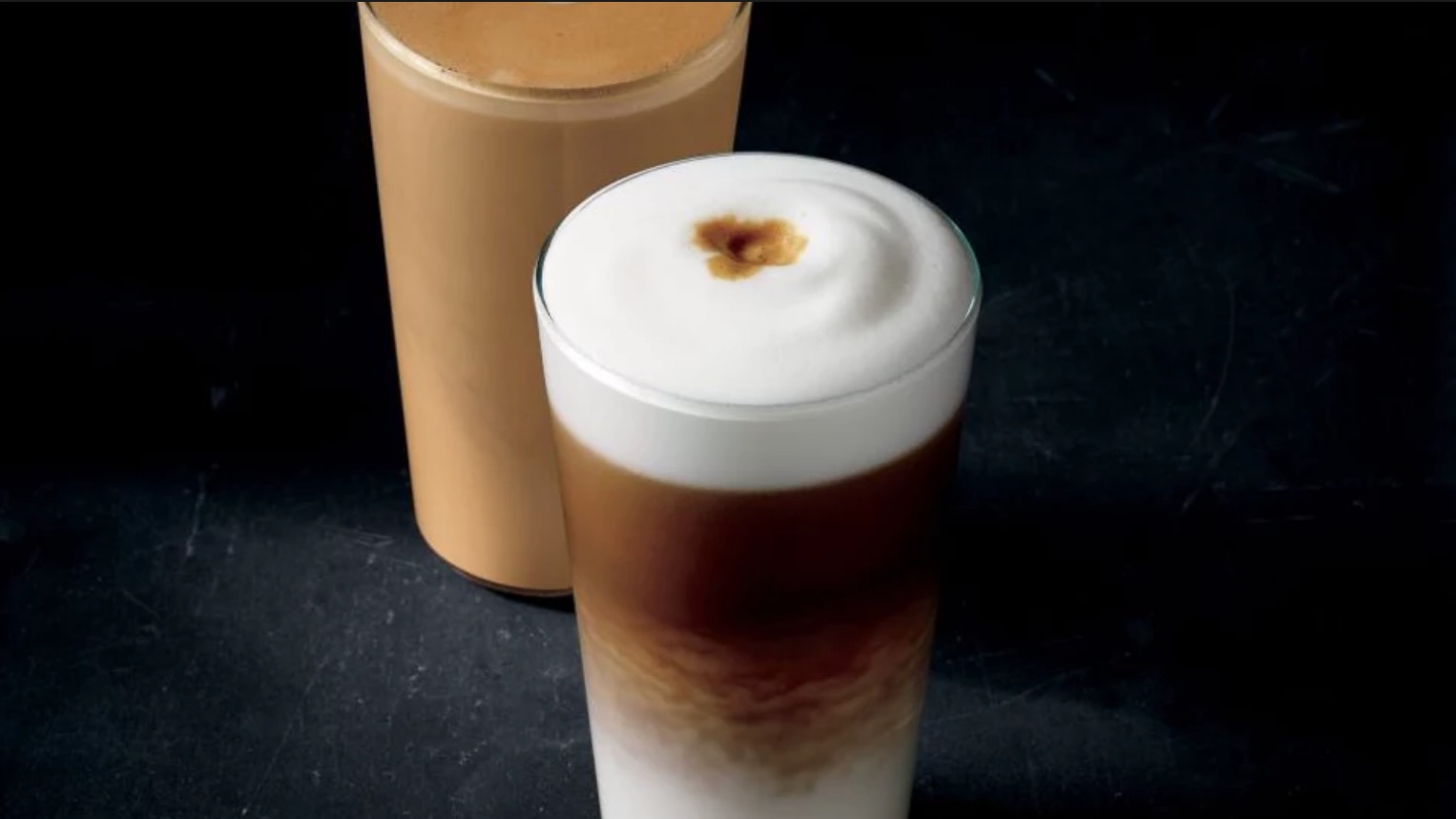
The definition of a latte is that it is a drink made from espresso and steamed milk, where the milk is added first, and then the espresso.
This seems to be exactly what we talked about before, with the latte macchiato. Essentially we're talking about the same drink…
But not quite. They are, in fact, different.
Here's a great graphic that Starbucks made that shows the precise difference between these two similarly named drinks.
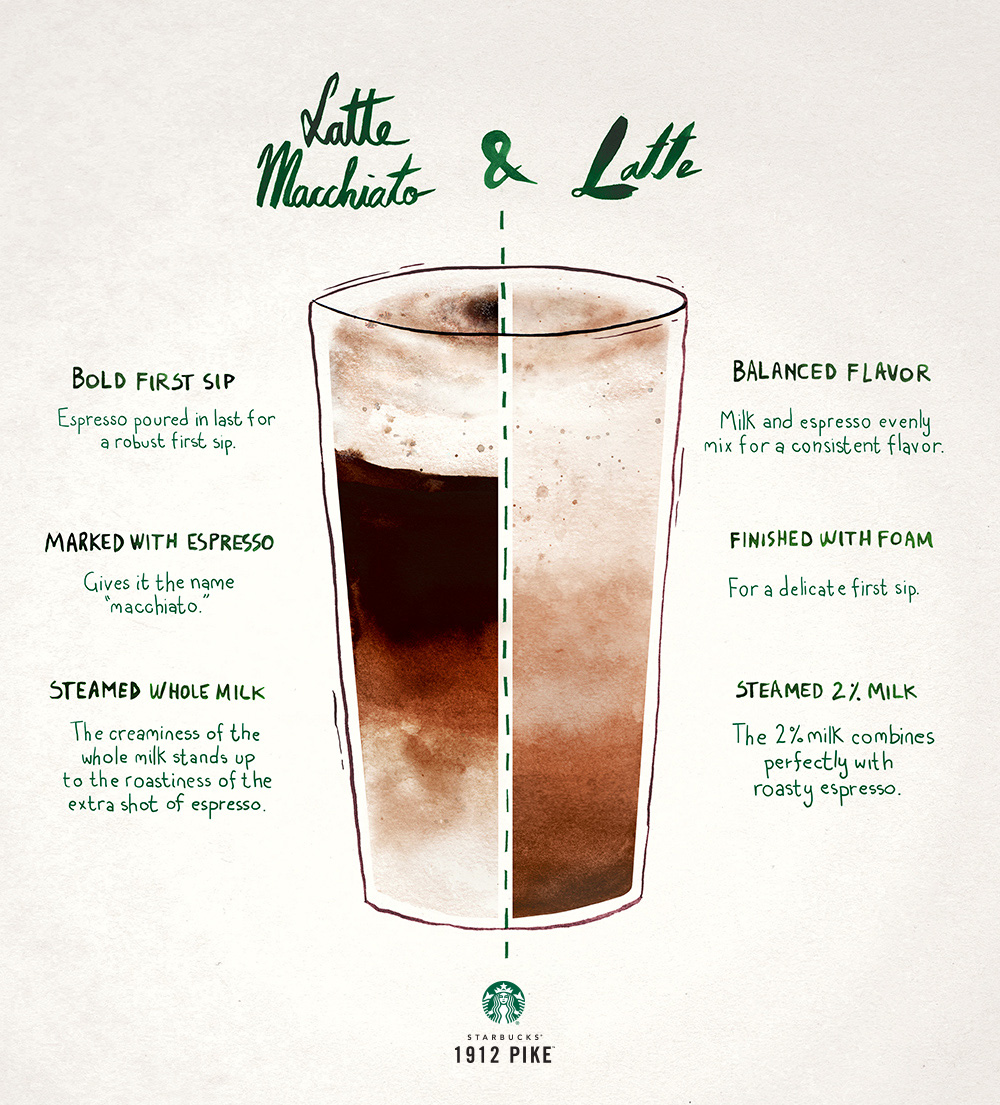
The differences here are actually many between the café latte vs the café macchiato.
They include:
- Steamed whole milk (café macchiato) instead of steamed 2% milk (café latte)
- More espresso in the macchiato
- Distinct regions visible within the drink (macchiato) vs consistent and velvety (latte)
- Marking on the macchiato vs no marking with the latte
- Bold first sip (macchiato) vs. delicate first sip (latte)
As you can see, these seem like minor differences between these two drinks, but all of these minor changes do amount to two very different looking and tasting beverages.
Do You Dare Snub The Elders? / Getting Creative
Here's the part where we talk mainly to the non-purists, who don't mind getting a little crazy and creative with their macchiatos, and shrugging in the direction of Italy and their traditions when it comes to macchiatos.
Gaze briefly at this almond pistachio macchiato for a moment if you will, and we think perhaps you will conveniently forget about whatever was happening hundreds of years ago in some country shaped like a boot.
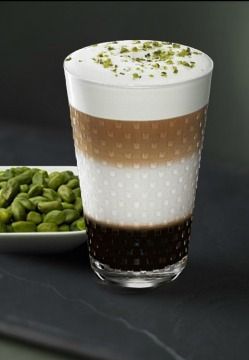
Purists, of course, will say that if you avoid the strict guidelines set out by the pros, and perhaps some Italian coffee elder who's still out there somewhere, you are henceforth going into a territory which is no longer the domain of the macchiato, and perhaps taking too many liberties.
But one only lives once! So in that case, let's talk more about some variations on the classic recipe.
Now, if a bold cup of java is not to your taste preference, macchiatos are no strangers to flavoring in recent years. Many cafés and coffee shops have special macchiatos served with shots of vanilla, hazelnut, or caramel flavoring.
Non-traditionally, these drinks are served both iced or hot, depending how you like 'em, making the macchiato as versatile as some other drinks, perfect for either wintery evenings or warm summer mornings.

Since the macchiato is mostly espresso, some wonder why you would need a dash of milk at all. Well, if you take the milk away, then technically we're just talking about espresso here. It's just …not a macchiato anymore. Then you've just gone too far, buddy.
If you want to be creative in that respect, and ditch the milk, you really are not even dealing with a macchiato at all, by any definition. It must have milk! IT MUST!
So, our opinion is that people should feel free to experiment with their macchiatos, if they have that urge, but never forget the definition of what the drink actually consists of.
This way, if you come upon a totally new and awesome way to create a macchiato, you can still get all the glory that goes along with being among the intrepids of the world - Marie Curie, The Wright Brothers, and, you know…..you. 😉
How To Make A Starbucks-Style Caramel Macchiato
That said, check out this popular video by Pinkmacprincess showing how to make a classic Starbucks-style iced caramel macchiato. Lots of people love this drink, and it's one of the more popular Starbucks summer beverages, from what we've heard.
Steps on how to make a DIY Starbucks Caramel Macchiato:

- Make your favorite cup of coffee. I like to use the darkest roast I can find, but you can choose any kind of flavor that you like.
- Warm up some milk on the stove until it is warm to the touch (but not boiling). Pour about 1-2 ounces of warm milk into your cup of coffee and mix until it has blended with the creaminess of your coffee.
- After the coffee has been blended, add a caramel syrup to your taste. The amount you put in will largely depend on how strong of a flavor you want the final product to have (1-3 tablespoons is usually enough). After adding the syrup, mix it with your coffee.
- Add one small scoop of ice cream on top of your drink.
- Drink and enjoy!
The steps are simple, but it's definitely a good idea to read them through once or twice before beginning. A DIY Caramel Macchiato is a great way to get a delicious Starbucks flavor in the comforts of your own home while saving money. When you finish making it, be sure to drink it while it's still hot.
While many of us are not professional coffee makers, we strive to enjoy our favorite cup of joe frequently.
A macchiato is a good start if you are not ready for a straight up espresso shot and your palate craves something with a touch of sweetness and delectability.
Or, flip it around and go for the latte macchiato. Just don't forget to mark it with the signature "spot" the way the pros do.
Even with a shot of flavoring, the macchiato is a good choice for any coffee lover.
Enjoy, and please report back if you happen to come across any particularly inventive or otherwise awesome variations on this classic Italian coffee drink!
How To Make a Caffe Macchiato - BONUS VIDEO
Here is a great video by HowcastFoodDrink featuring barista Mike Jones of Third Rail Coffee in New York City, showing how he makes a macchiato.
Espresso Field Guide
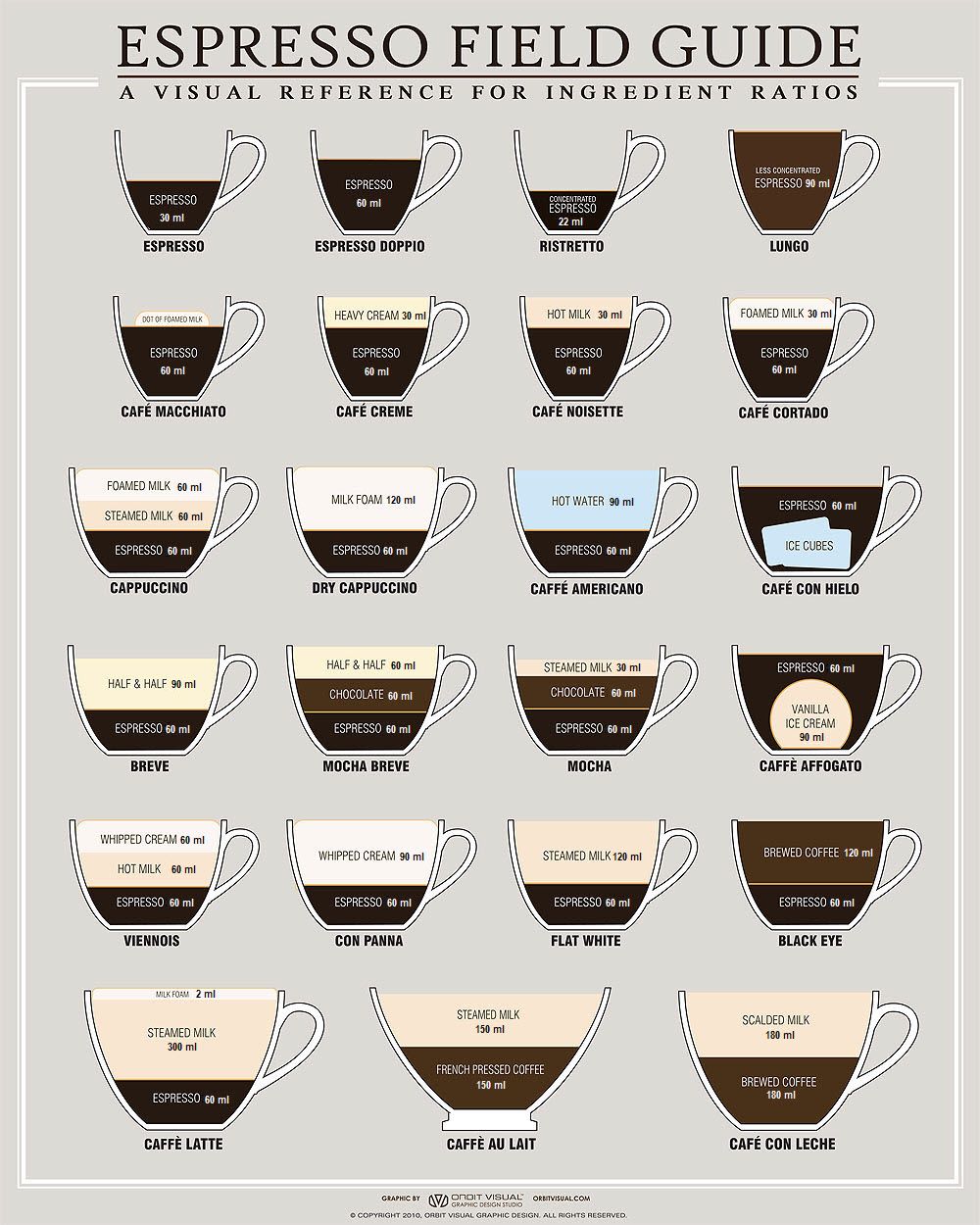
We have a variety of great options for coffee drinkers that want to filter their own ground beans. The permanent filters are not made with any chemicals and they last an absurd amount of time without needing replacement, which is why we think this is the best option for people who drink 1-2 cups per day. If you're someone who loves to experiment with different flavors or types of coffees, then taking care of your machine will be important. You'll need something like our paper cone filters that can filter out sediment while still letting through all those tasty flavor oils!
Conclusion for Macchiato Lovers
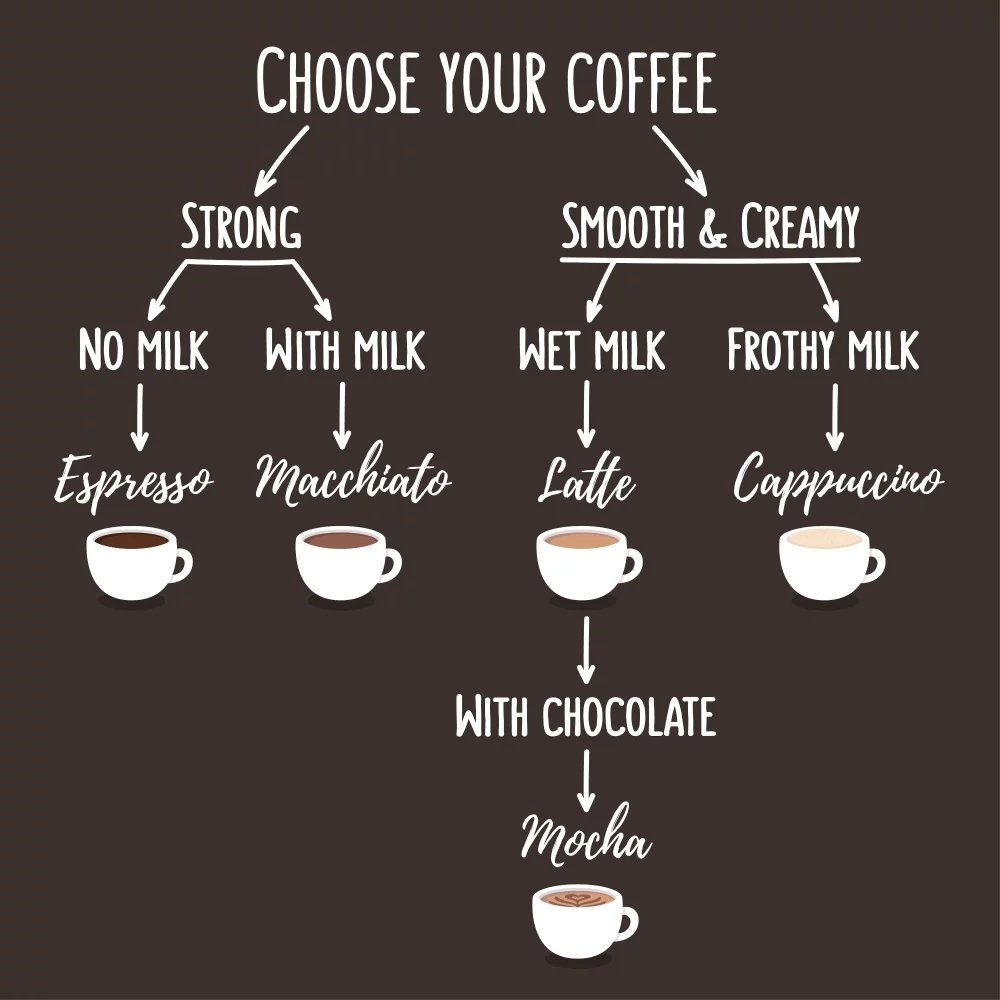
A macchiato is an espresso-based coffee beverage. It's made with a dash of milk foam, and sometimes topped off with cinnamon or cocoa powder. This drink can be ordered hot or iced depending on your preferences, but the most popular way to enjoy this caffeine fix is as a warm latte that has been sweetened just right. As you sip down this delicious concoction, we hope it will remind you of all the wonderful things about life--especially those moments when everything seems perfect!
 |
 |
 |
 |

About Selmir Omic
Selmir Omic is KYG's cannabis lifestyle writer. He currently resides in San Francisco and can often be found enjoying design-forward cannabis accessories, candles and seltzer simultaneously. When he's not writing about pot or waxing poetic about vape pens, Selmir can be counted on to offer sage advice about the best strains for anxiety or how to make cannabutter without a stovetop.
Thoughts on "What is a Macchiato?"
 |
 |
 |
 |
Get FREE Coffee Gifts now. Or latest free grinders from our best collections.
Disable Ad block to get all the secrets. Once done, hit any button below
 |
 |
 |
 |